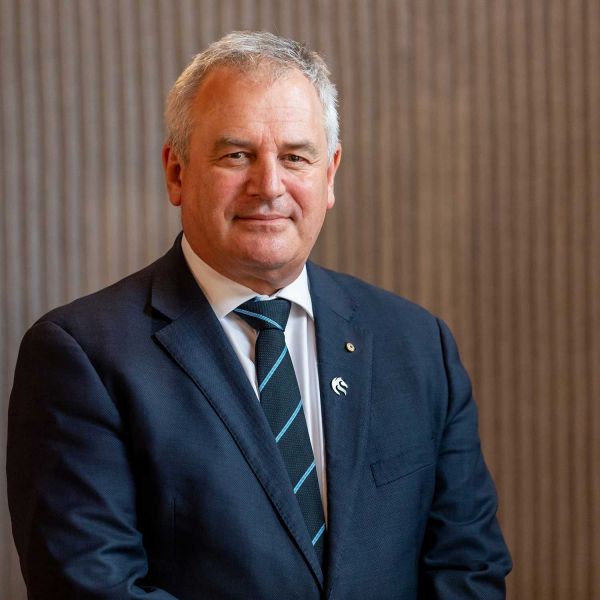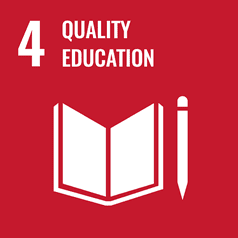An accord that delivers true reform
The Albanese government needs to channel Bob Hawke’s “bringing people together” ethos by harnessing the collective power of government, unions and universities to lift productivity and make the higher education system more prosperous, writes Vice-Chancellor Professor Alex Zelinsky.

Even after a sweeping electoral victory, big reforms in modern politics carry risks. The electorate has, of late, not embraced major policy shifts from either side of politics. Labor offers a track record of successfully navigating the big challenges that have faced our nation.
Prime Minister Anthony Albanese’s government has a reform mandate not seen since the Hawke-Keating era. That saw the floating of the dollar, the removal of trade barriers, the establishment of universal healthcare and laid the foundations for today’s higher education system.
Those reforms began with the Prices and Incomes Accord which stabilised areas of perennial socio-economic friction. It promised “justice” for unions, businesses, and government while creating the political clear-air for decisive action.
This is the kind of stabilisation and common purpose is very much needed in 2025, when Australia’s biggest challenge, lifting productivity, requires cohesive effort. Instead, the key agents of reform – government, unions and universities – are locked in a “triangle of unhappiness”, where each party is dissatisfied with the actions and the agenda of the others.
Government has over-regulated universities, clumsily capping international student flows and constricting investment in teaching and research. Unions are demanding wage justice, with calls to cap million-dollar executive pay and to address “wage theft” for casuals. Universities are caught in the middle: with an unsustainable business model, they are unable to support inflation-driven wage demands that are underpinned by byzantine enterprise agreements. This in many cases has led to the contracting and laying-off of staff, reducing research depth and slashing budgets. The politics of modern Australia has been contested at universities with the Israel-Gaza conflict. Universities have sought to balance academic freedom and free speech, while dealing with union pressure for a pro-Palestinian posture and government calls to extinguish anti-Semitism on campuses.
This triangle of unhappiness is stultifying portions of the economy and civic society that, together, could make generational gains, lifting the skills base, upscaling technology, and driving Australia’s productivity while building civility and mutual respect.
There is a ready-made approach. Inspired by the original accord, Labor’s Minister for Education, Jason Clare, set out his own reform accord in the government’s first term. The current opportunity is one for calibration and implementation, not design.
Resolving system imbalances must be a priority in preparing the ground for a new accord. The accord’s implementing body, the Australian Tertiary Education Commission, has the scope to do that, while setting in train an urgently needed productivity push.
Objectively determining the true cost of a university education is vital. The 2019 costing work undertaken for the Jobs Ready Graduate (JRG) package was flawed. It reduced funding to the sciences and engineering, which are critical to national productivity. A proper costing of the higher education system must be the first task of business for the Commission.
Fair pricing of degrees needs to be a priority. It will need to determine the level of investment by government supplemented by students. Under current arrangements, student fees for arts and humanities courses have, for example, ballooned well beyond graduate wages in those fields. JRG is also quite unfair to the over 40 per cent of students who pay 93 per cent of the total cost of their degrees, while others receive a substantial subsidy.
Determining the price of a degree should factor in areas of pointed economic or social demand. Disciplines like nursing, education and aged care should attract subsidies. Social good must be central to the new accord, as it was in the original. Attracting talent is a challenge for most employers. Is it time to re-examine industry-based training schemes, such as cadetships, that were popular in the last century? Students worked and studied, while employers provided some time off to study and contributed to fees.
Dog-whistling politics have been undermining Australia’s largest services export – education. This revenue is being used by most universities to balance the books. Preventing universities from growing investment through international students and research collaboration will damage the higher education system, giving Australian students an inferior outcome. A balanced program based on true demand would be better.
Tying Australia’s skilled migration program to international student flows would free up new enrolments as skilled positions are filled in the labour market. This would allow areas of productivity uplift to be met, while building domestic capacity.
A more diverse university sector is an additional necessity that has long eluded federal governments. A system that calibrated true costs would draw out that diversity. It would see the Commission working with universities and industry to determine the differing compacts our institutions should have, reflective of strengths, regional ties and economic needs.
We need complementarity. Not the cutthroat setting that sees universities competing for domestic student load, and double-down on high-risk international student concentrations.
A diverse cohort of universities, that retain comprehensiveness while augmenting regional characteristics, would also lift access for regional and rural Australia. Current practices have rendered teaching and research in many remote areas unviable.
The Universities Accord can be a framework not just to end the unhappiness but bring common purpose.
None of this will be easy. Nor can it be solved in a single accord. The returned Albanese government and the minister have the mandate to start the process. And universities have the burning platform, plus the need to reassert their civic purpose while working constructively with the unions.
As Hawke’s 1983 campaign slogan promised, truly transformative reform begins with “bringing people together”. Let’s get started.
Professor Alex Zelinsky AO is the chair of the Australian Technology Network of Universities, Convenor of the NSW Vice-Chancellors’ Committee and Vice-Chancellor of the University of Newcastle.
Related news
The University of Newcastle acknowledges the traditional custodians of the lands within our footprint areas: Awabakal, Darkinjung, Biripai, Worimi, Wonnarua, and Eora Nations. We also pay respect to the wisdom of our Elders past and present.
